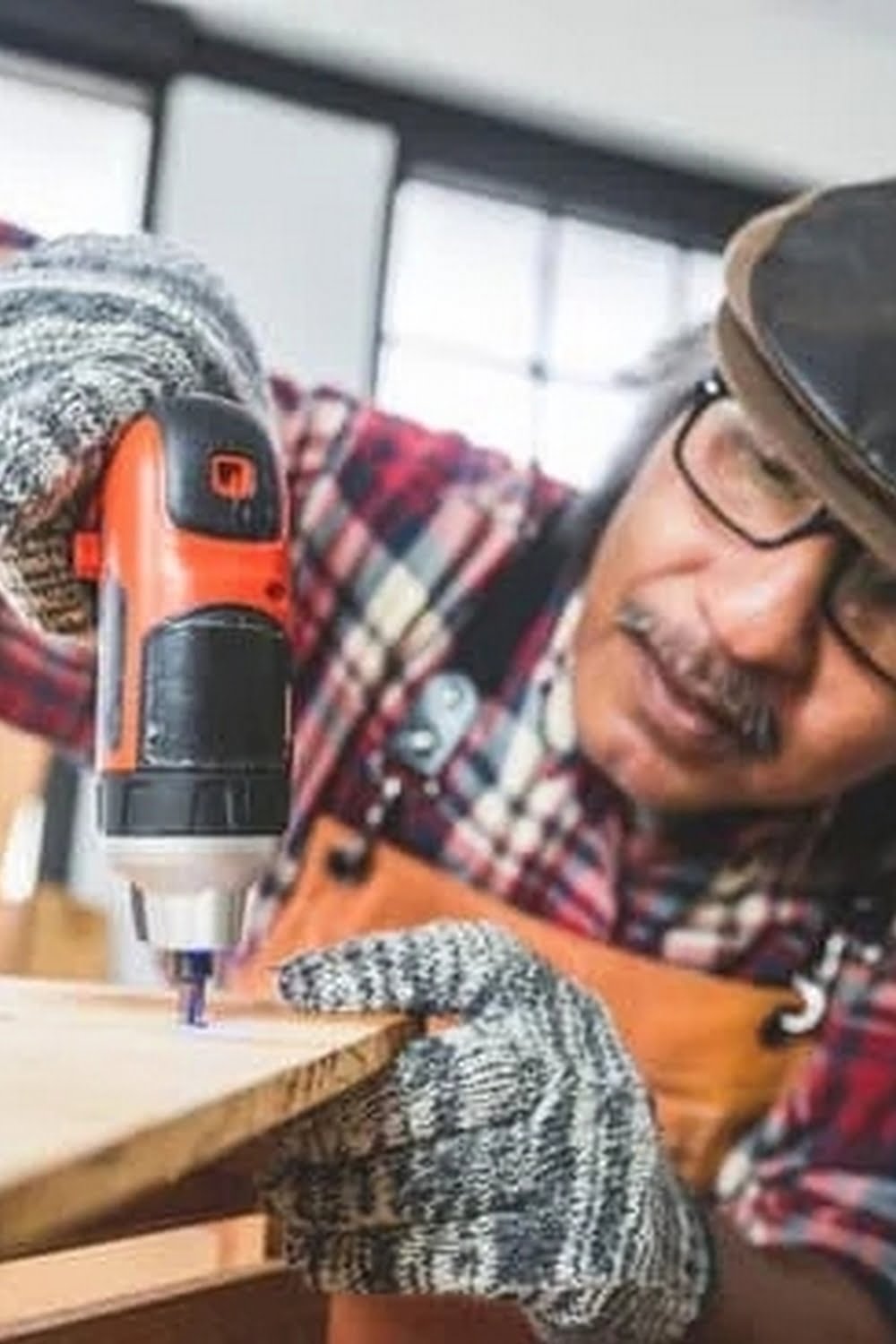Are you interested in learning how to learn woodworking at home? Woodworking is a valuable skill that allows for creativity and the satisfaction of building something with your own hands. In this article, we will explore the benefits of learning woodworking at home and provide tips, tricks, and resources for beginners.
Learning woodworking at home has many advantages. It allows you to work at your own pace, in the comfort of your own space, without the need for costly classes or workshops.
Additionally, it provides the opportunity to develop new skills, from understanding different types of wood to mastering various techniques. Whether you are a beginner with no prior experience or someone looking to refine their skills, this article will guide you through the process of getting started with woodworking at home.
Setting up an at-home woodworking space is an important first step. This section will provide tips for creating a dedicated workspace that is safe and efficient. Additionally, we will discuss essential tools and equipment for beginners, along with safety precautions and best practices to ensure a secure and enjoyable woodworking experience. Whether you have limited space or are working with a small budget, there are practical solutions to help you get started on your woodworking journey.
Setting Up Your at-Home Woodworking Space
Setting up a dedicated woodworking space at home is an essential step for anyone looking to learn and hone their woodworking skills. Having a well-organized and efficient workspace not only makes it easier to work on projects but also contributes to overall safety and enjoyment. Here are some tips and tricks for creating the perfect at-home woodworking space:
1. Choose the Right Location: Find a suitable area in your home where you can set up your woodworking space. This could be a garage, basement, shed, or even a spare room. Consider factors such as ventilation, natural light, and access to power outlets.
2. Organize Your Tools: Invest in storage solutions such as tool chests, shelves, and pegboards to keep your tools organized and easily accessible. A clutter-free workspace not only improves efficiency but also reduces the risk of accidents.
3. Create a Functional Layout: Arrange your tools and equipment in a way that facilitates smooth workflow. Keep frequently used tools within arm’s reach and designate specific areas for cutting, sanding, and assembly.
4. Customize Your Workbench: The workbench is the focal point of any woodworking space. Customize it to fit your needs by adding features such as clamps, vises, and integrated tool storage.
5. Consider Dust Collection: Woodworking generates a lot of dust, so consider investing in a dust collection system or using portable dust extractors to keep your workspace clean and healthy.
By following these tips and tricks for setting up your at-home woodworking space, you can create an environment that allows you to focus on learning and practicing your woodworking skills effectively.
Lastly, it is important to maintain proper cleanliness in all areas as one goes through this journey of how to learn woodworking at home.
Essential Tools and Equipment for Beginners
When learning woodworking at home, having the right tools and equipment is essential for success. Whether you are just starting out or looking to expand your skills, here are some of the essential tools and equipment that beginners should have in their at-home woodworking space:
- Measuring Tools: A tape measure, combination square, and ruler are crucial for accurate measurements and precise cuts.
- Cutting Tools: A quality handsaw, circular saw, jigsaw, and miter saw are essential for cutting wood to size.
- Joinery Tools: Basic hand tools like a hammer, screwdriver set, chisels, and a handheld drill will help with assembling and connecting wood pieces.
- Sanding Equipment: Sandpaper in various grits, a sanding block, and an electric sander will be necessary for smoothing out rough edges and surfaces.
In addition to these basic tools, safety gear is also critical when working with wood. This includes eye protection, ear protection, a dust mask or respirator, and protective gloves.
When selecting tools and equipment for your at-home woodworking space, it’s important to invest in quality items that will last. While there are many options available at different price points, choosing durable tools will ultimately save you time and money in the long run.
Learning how to use each tool properly is equally important when getting started with woodworking at home. Taking the time to familiarize yourself with the functions and safety considerations of each tool will contribute to a successful and enjoyable woodworking experience.
Safety First
When learning woodworking at home, safety should always be a top priority. Whether you’re a beginner or have some experience, it’s crucial to take the necessary precautions and follow best practices to ensure your safety and the safety of those around you.
One of the first steps in prioritizing safety is to invest in personal protective equipment (PPE) such as safety goggles, hearing protection, and a dust mask. These items will help prevent accidents and protect you from potential hazards while working with wood.
In addition to wearing PPE, it’s important to familiarize yourself with the tools and equipment you will be using. This includes understanding how each tool works, how to properly handle them, and how to maintain them. Proper tool maintenance not only ensures optimal performance but also reduces the risk of accidents that can occur due to malfunctioning equipment.
Another important aspect of woodworking safety is maintaining a clean and organized work area. Cluttered workspaces can lead to tripping hazards and make it difficult to maneuver around your tools and materials. By keeping your workspace tidy, you can minimize the risk of accidents and injuries.
By following these important precautions and best practices, you can create a safe environment for learning woodworking at home. Remember that taking the time to prioritize safety will not only protect you from harm but also allow you to fully enjoy the process of honing your woodworking skills. Now that we’ve covered this crucial aspect of woodworking at home, let’s explore some basic techniques and terminology that will set a strong foundation for your learning journey.
Learning the Basics
Understanding Woodworking Techniques
Woodworking involves various techniques that are used to shape, cut, join, and finish wood to create functional or decorative items. Some common woodworking techniques include cutting, carving, shaping, joining, finishing, and more. Learning these techniques can be challenging at first but with practice and patience, individuals can gradually improve their skills and become proficient in executing different woodworking tasks.
Exploring Woodworking Terminology
It is important for beginners to familiarize themselves with woodworking terminology in order to better understand the craft. Some key terms include grain, joint, chamfer, rabbet, bevel, dado, mortise and tenon, among others. By learning and understanding these terms, individuals can effectively follow woodworking plans and instructions as well as communicate with other woodworkers.
Practicing Hands-on Learning
One of the best ways to learn woodworking techniques and familiarize oneself with woodworking terminology is through hands-on practice. Aspiring woodworkers can start by practicing basic techniques such as making straight cuts with a handsaw or chisel work on scrap wood. Additionally, enrolling in beginner-friendly classes or workshops can provide valuable guidance on mastering fundamental woodworking skills.
By understanding basic woodworking techniques and terminology through hands-on learning experiences and educational resources like books or online tutorials; individuals can lay a solid groundwork for their woodworking journey.
Step-by-Step Projects for Beginners
Once you have set up your at-home woodworking space and familiarized yourself with the essential tools and safety practices, it’s time to start building your skills through hands-on projects. Taking on beginner-level woodworking projects not only helps you hone your craftsmanship but also gives you a sense of accomplishment as you see the tangible results of your efforts.
When learning how to do woodworking at home, it’s important to start with simple projects that allow you to practice fundamental techniques. Some popular beginner woodworking projects include building a small shelf, creating a wooden picture frame, or crafting a basic step stool. These projects typically require minimal materials and can be completed within a relatively short period of time, making them perfect for those who are just getting started.
As you work on these beginner projects, take the time to pay attention to details and strive for precision in your measurements and cuts. Learning how to properly use hand tools and power tools is an essential part of developing your woodworking skills, so don’t rush through these early stages. Remember that practice makes perfect, and each project you complete will contribute to your growth as a woodworker.
Moreover, seeking out step-by-step guides or tutorials for beginner woodworking projects can provide valuable assistance as you build your skills. There are countless online resources offering detailed instructions along with photos or videos that can guide you through the entire process. Whether it’s learning how to create clean wood joints or apply a smooth finish, following along with expert guidance will enhance your understanding of woodworking techniques.
| Woodworking Project | Tools Needed |
|---|---|
| Small Shelf | Measuring tape, saw, hammer, drill |
| Wooden Picture Frame | Miter saw, sandpaper, wood glue |
| Basic Step Stool | Jigsaw, wood screws, clamps |
Online Resources and Courses for Learning Woodworking at Home
Online Resources for Learning Woodworking:
Comprehensive Video Tutorials
One of the most valuable ways to learn woodworking at home is through comprehensive video tutorials. Platforms like YouTube and specialized woodworking websites offer a wealth of tutorials covering everything from basic techniques to advanced projects. These videos provide real-time demonstrations, allowing you to see exactly how each step is performed. Additionally, many creators also offer tips and tricks for maximizing efficiency and achieving professional results.
Interactive Online Courses
For those seeking a more structured learning experience, interactive online courses are an excellent option. These courses are often led by experienced woodworkers and cover a wide range of topics, including tool usage, project planning, and finishing techniques. Many platforms also include interactive elements such as virtual workshops and live Q&A sessions, providing an immersive learning experience right from the comfort of your home.
Community Forums and Discussion Boards
Learning woodworking at home doesn’t have to be a solitary endeavor. Engaging with online community forums and discussion boards can provide valuable insights, troubleshooting advice, and project ideas from fellow enthusiasts and seasoned professionals alike. These platforms offer a space to ask questions, share experiences, and seek inspiration, creating a supportive network for individuals embarking on their woodworking journey.
By taking advantage of these online resources and courses, individuals can effectively learn woodworking at home while benefiting from the expertise of others within the woodworking community. Whether you prefer to follow along with video tutorials or engage in interactive online courses, there are numerous opportunities to expand your skills and knowledge in this rewarding craft.
Finding Inspiration and Taking Your Skills to the Next Level
Once you have learned the basics of woodworking at home, it’s time to find inspiration and take your skills to the next level. Whether you’re creating small furniture pieces or intricate woodcarvings, there are countless ways to continue growing as a woodworker.
One way to find inspiration is by exploring different woodworking styles and techniques. Consider trying your hand at traditional woodworking methods, such as joinery or hand carving, and experiment with modern woodworking tools and technologies. Visiting woodworking exhibitions, museums, and galleries can also expose you to new ideas and designs that can fuel your creativity.
Additionally, seeking out mentorship or joining a local woodworking community can provide valuable opportunities for learning from experienced woodworkers. Attending workshops or classes led by master craftspeople can offer insight into advanced techniques and allow you to learn from real-world experiences.
Another way to take your skills to the next level is by challenging yourself with more complex projects. As you become more comfortable with basic woodworking techniques, consider tackling larger pieces of furniture or intricate decorative items. Pushing your boundaries will not only expand your skillset but also boost your confidence as a woodworker.
By constantly seeking inspiration and pursuing new challenges, you can elevate your woodworking skills from amateur to artisan. Remember that learning is an ongoing process in any craft, so embrace the journey of honing your skills in woodworking at home. Whether it’s through experimenting with new techniques, networking with fellow woodworkers, or taking on ambitious projects – there are endless opportunities for growth within this timeless craft.
Conclusion
Learning woodworking at home can be a rewarding and fulfilling journey for anyone who has a passion for crafting with wood. Whether you are a complete beginner or have some experience, there are countless benefits to honing your skills in the comfort of your own space.
By setting up a dedicated woodworking area, investing in essential tools, prioritizing safety, and taking advantage of online resources and courses, you can embark on a unique learning experience that allows you to explore your creativity and build practical skills.
One of the most exciting aspects of learning woodworking at home is the flexibility it offers. You have the freedom to set your own schedule, work at your own pace, and choose projects that interest and challenge you.
Additionally, with the abundance of online tutorials, videos, and courses available, you have access to a wealth of knowledge right at your fingertips. This means that no matter where you are in your woodworking journey, there are resources available to help you learn new techniques, discover innovative projects, and connect with other enthusiasts.
As you embrace the journey of learning woodworking at home, remember that mistakes are part of the process. Every project is an opportunity to learn and improve your skills. Be patient with yourself as you navigate through different techniques and methods.
Seeking inspiration from experienced woodworkers and finding opportunities to collaborate or seek advice can also greatly enhance your learning experience. Ultimately, by committing to continuous learning and practice, you can develop valuable skills that will not only bring satisfaction but also allow you to create beautiful, functional pieces for yourself and others.
Frequently Asked Questions
How to Learn Woodworking for Beginners?
Learning woodworking as a beginner requires patience, practice, and the right tools. Start by familiarizing yourself with basic techniques through online tutorials or local workshops. Invest in essential tools gradually and practice consistently to improve your skills.
How Do I Start Woodworking With No Experience?
Starting woodworking with no experience may seem daunting, but it’s achievable with dedication. Begin by researching and understanding basic woodworking concepts. Next, invest in essential tools and start with simple projects to build confidence and skills over time.
Is Woodworking an Expensive Hobby?
Woodworking can be an expensive hobby, especially when acquiring high-quality tools and materials. However, it doesn’t have to break the bank for beginners. By starting small and gradually investing in quality tools as needed, woodworking can be an affordable and rewarding hobby in the long run.

Hi everyone! I’m a woodworker and blogger, and this is my woodworking blog. In my blog, I share tips and tricks for woodworkers of all skill levels, as well as project ideas that you can try yourself.





